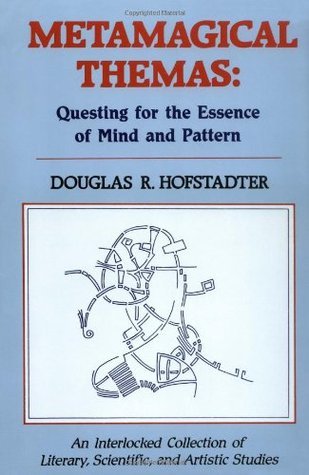
Metamagical Themas: Questing for the Essence of Mind and Pattern
Book Description
Patterns shape reality, but what if they also shape our minds? In "Metamagical Themas," Douglas R. Hofstadter embarks on a mind-bending journey through the labyrinth of thought, where logic dances with intuition and puzzles manipulate perception. Delve into the enigmatic interplay of art, mathematics, and consciousness, unlocking the secrets of how we think and connect. Each chapter reveals startling insights and surreal twists, challenging the very fabric of understanding. Prepare for a captivating exploration that ignites curiosity and wonder. Can the essence of mind and pattern truly be unraveled, or are some mysteries destined to remain unsolved?
Quick Book Summary
"Metamagical Themas" is a diverse collection of essays exploring the intricate interplay among mathematics, mind, and patterns. Douglas Hofstadter invites readers on a journey through puzzles, paradoxes, language games, and the philosophy of consciousness. He investigates how patterns both emerge from and influence thought across disciplines—bridging logic, metaphors, art, and cognitive science. With wit and intellectual rigor, Hofstadter uncovers how self-reference, recursion, and creativity shape both artificial and human intelligence. As he reflects on the unpredictable ways we generate meaning in language and form concepts, readers are challenged to reconsider the boundaries of self, the structure of cognition, and the prospects of unraveling consciousness. The book is a celebration of curiosity, playful thinking, and the ongoing quest to understand the patterns at the core of human experience.
Summary of Key Ideas
Table of Contents
Patterns as Foundations of Reality and Mind
Patterns permeate every aspect of existence, and Hofstadter delves deeply into their dual role as structuring forces of the objective world and as foundational elements in human cognition. He brilliantly illustrates how mathematics and science uncover hidden regularities, while art and music echo these very same patterns. The essays suggest that by perceiving, abstracting, and manipulating patterns, minds construct meaning and reality, challenging us to consider to what extent our cognition is pattern-bound.
Self-Reference and Recursive Structures
Self-reference and recursion—themes central to Hofstadter's earlier work—are explored as engines of both logical paradoxes and creative cognition. He highlights mathematical puzzles like the liar paradox and Gödel’s incompleteness theorems, showing how self-reference destabilizes formal systems and, analogously, how thought loops underpin consciousness. These recursive structures not only confound computers and logicians but also shape how we perceive ourselves as thinking beings.
The Role of Language and Metaphor in Thought
Language and metaphor emerge as powerful vehicles for thought, allowing humans to leap from the literal to the abstract. Hofstadter analyzes how metaphors frame understanding and how linguistic play generates both ambiguity and new ideas. Through examples ranging from anagrams to analogies, he demonstrates that language is inherently flexible and that creativity often arises from playful transgressions of its boundaries, underscoring the centrality of linguistic innovation in human intelligence.
Games, Puzzles, and Human Cognition
Games and puzzles act as microcosms of mind in Hofstadter's essays. They test the limits of logic, intuition, and computational power, offering insights into problem-solving strategies and the quirks of perception. Whether studying mathematical curiosities or optical illusions, he reveals the underlying psychological processes and the ways in which playful engagement with challenges can illuminate cognitive mechanisms.
The Limits and Paradoxes of Understanding
Concluding with the limits and paradoxes of understanding, Hofstadter confronts the perennial mystery of consciousness and the nature of self. Despite the advances of science and logic, some questions—such as the subjective essence of mind or the final explanation of pattern—may be inherently unresolvable. Yet, Hofstadter argues, this does not undermine the value of inquiry. Instead, it inspires humility and wonder, fueling the perpetual quest to fathom the essence of thought, pattern, and reality.
Download This Summary
Get a free PDF of this summary instantly — no email required.





